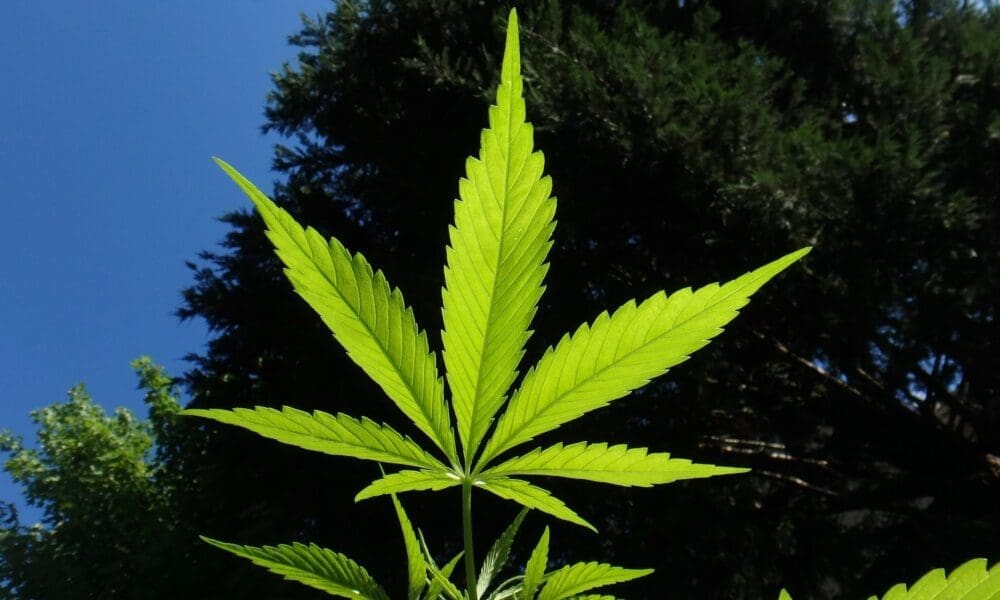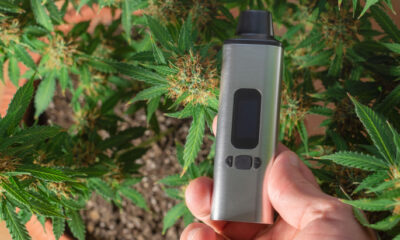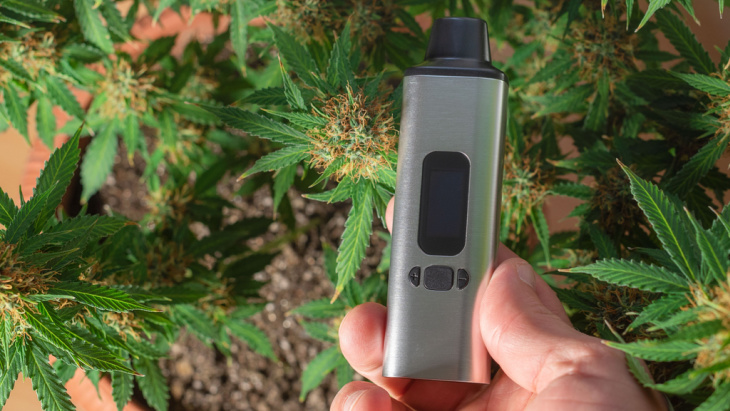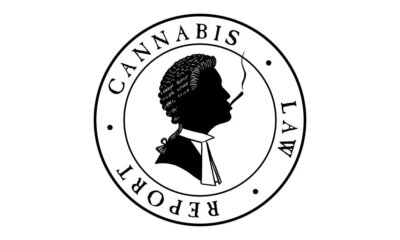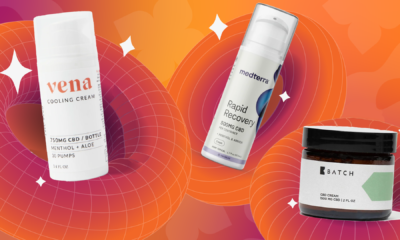At a webinar hosted by the federal Substances and Mental Health Services Administration (SAMHSA) last week, a leading cannabis researcher threw cold water on the notion that legalizing marijuana leads to increases in youth use of the drug. He also touched on problems with roadside assessments of cannabis impairment, the risk of testing positive for THC after using CBD products and the need for more nuanced regulation around cannabinoids themselves.
The public talk, from Ryan Vandry, an experimental psychologist and professor at Johns Hopkins University’s Behavioral Pharmacology Research Unit, was aimed at providing continuing education on marijuana for healthcare professionals. Titled “Behavioral Pharmacology of Cannabis – Trends in Use, Novel Products, and Impact,” it focused primarily on how variables like dosage, product formulation, mode of administration and chemical components such as terpenes can influence the drug’s effects.
Vandry began by noting that marijuana is the most commonly used illicit drug in the United States. While self-reported consumption by adults has risen as more states have legalized in recent years, he noted, use by youth has generally remained flat or fallen.
“Use among youth is one of the biggest areas of concern related to the legalization and increased accessibility of cannabis,” he said, “but surprisingly, that cohort has actually maintained relatively stable [for] both past-year and daily use.”
Pointing to data from California going back to 1996, when the state ended prohibition for medical patients, Vandry said there has “really been no change in the rates of cannabis use among eighth, 10th or 12th graders. And in fact, in very recent years, we’ve seen a decrease in rates of consumption.”
The researcher repeatedly emphasized the need for policymakers and health experts to differentiate between different kinds of cannabis, focusing less on delta-9 THC levels—which currently distinguish hemp from marijuana at the federal level—and more on a given product’s physical and cognitive impacts.
“There is a gap between our understanding of these products and the evolution of retail cannabis products,” Vandry said. “The cannabis industry is driving diversity through competition, and scientifically, we’re having a hard time keeping up with the diversity of products that are coming out.”
In general, he called for differentiating between THC-dominant products, CBD dominant products and other cannabinoid products based on their behavioral and health effects. THC and similar cannabinoids—including delta-8 THC, which is usually derived from legal hemp—exhibit characteristics typical of drugs of abuse, Vandry said, such as substance use disorders, withdrawal and impairment.
“CBD is a very different animal,” he continued, noting that research shows “no evidence” of impairment or problem use, even when administered alongside very small amounts of THC. Another cannabinoid, CBG, “looks surprisingly similar to CBD in that it really doesn’t produce THC-like effects,” he said, citing a colleague’s research.
But Vandry pointed to the current legal distinction between delta-8 THC and delta-9 THC—which both cause psychoactive effects—as an example of where regulations lag behind cannabis science. While delta-8 is metabolized more quickly in the body and is often described as less potent, a study he was involved in “showed…that if you just take double the dose of delta-8, you can get the exact same effects as delta-9,” he said.
“But again, these two chemicals exist in extremely different areas in terms of federal policy and regulation,” the researcher continued. “Delta-9 THC is a Schedule I drug, and delta-8 THC is completely unscheduled if derived from hemp.”
Another area where current policies are inadequate is evaluating marijuana-related impairment. Vandry and colleagues looked at three standard field sobriety tests used by law enforcement and found that even people who were administered THC and showed signs of impaired psychomotor ability could pass the common screening tests.
Subjects given a 25 milligram dose of THC, meanwhile, which Vandry said caused observable impairment, often tested below per se THC blood limits, especially when the cannabinoid was taken orally.
“Blood levels and blood concentrations of THC after oral ingestion are very low compared to the peak levels with inhalation, despite relatively equal pharmacodynamic effects,” he explained. In one experiment, people given 25 mg of THC registered a peak concentration of only two nanograms THC per milliliter of blood, “which, in some areas, is less than the per se cutoff for detection of impairment.”
People who combined alcohol and marijuana also showed significant impairment even when neither their blood alcohol nor THC levels rose above per se limits.
“This is a public health issue that we need to work to resolve and figure out,” Vandry said.
While roadside tests could in some cases be missing signs of impairment, other tests might incorrectly lead to false positives.
For example, many CBD products contain very small amounts of THC. Vandry said that in research, people who took similar products sometimes ended up testing positive for the metabolite used in urine drug tests to screen for marijuana use.
“In many cases,” he said, the positive test came “after a single acute dose, and in most cases, after chronic dosing for two weeks.” Typically positive tests would cease after a few days of the person stopping use, but some people were still testing positive for THC use a week later.
Terpenes—often pointed to by cannabis connoisseurs as responsible for modulating the experience of a particular strain or product—are a complicated matter that scientists are still sorting out, Vandry said. For example, he noted that famed cannabis researcher Ethan Russo promoted the notion “based on the idea of the entourage hypothesis,” which asserts that various chemicals in cannabis modulate the overall experience.
Today, “a lot of marketing and advertising in the cannabis industry will make claims that specific terpenes do or promote certain types of therapeutic or beneficial effects above and beyond cannabis itself,” Vandry explained. Sometimes that’s supported by evidence, while other times it’s not, he said.
For example, in an experiment Vandry and Russo collaborated on, subjects were given the terpene D-limonene along with 30 mg doses of pure, inhaled THC.
“As we added doses of limonene to it, we got dose-orderly reductions in subjective ratings of anxiety and paranoia and the subjective feeling that their heart was racing,” he said, “but the overall magnitude of the drug effect was unchanged, cognitive impairment was unchanged… It seems here that limonene has a very specific non-cannabinoid mechanism by which it can attenuate the anxiety or panic-inducing effects of high doses of THC.”
By contrast, similar testing showed little evidence for the claimed effects of another terpene, alpha-pinene, which the cannabis industry sometimes promotes as reducing anxiety, easing breathing and counteracting the memory-impairing effects of THC.
“We didn’t really see any effect there,” Vandry said. “In contrast to the D-limonene study, we really saw no significant effect of alpha-pinene addition to delta-9 THC…on subjective drug effects, memory [effects] of any sort or cardiovascular effects.”
Other issues the webinar touched on included psychosis and schizophrenia, differences in cannabis effects between male and female subjects as well as the need for more research and increased quality control around cannabis.
With regard to what some have claimed is a causal link between marijuana and schizophrenia, Vandry was skeptical, noting that although in recent years, “past-year cannabis use has doubled in the U.S., the rate of schizophrenia has remained absolutely stagnant.”
He acknowledged that there is “undoubtedly a strong correlation between heavy cannabis use and earlier onset of psychosis, and psychosis severity” but said “the causality on someone who would not otherwise develop psychosis is still questionable.”
Vandry also warned that cannabis use disorder is a very real public health issue, with cessation rates similar to other drugs of abuse, such as nicotine or alcohol. Further, there’s some evidence that “females tend to react to the drug differently.”
“They metabolize the drug differently, they progress more rapidly from first use to problematic use and are more treatment-resistant,” he explained, adding that female users also “tend to have greater withdrawal symptoms than men.”
He also cautioned against focusing on THC potency levels in marijuana products, saying that overall dose, not potency, is what matters.
“What we see is that people will adjust their use behavior based on the potency of the product,” the researcher said, explaining a concept known as self-titration. “If you gave someone five percent flower and 30 percent flower, your routine frequent daily user is going to smoke much more of the five percent to get to about the same dose.”
“I think it’s more challenging for people to titrate their use of a high-potency product, but it’s the dose, not the concentration of the product,” he said.
Effects can also vary by diet, especially when cannabis products are administered orally. For example, “cannabinoids taken with a high fat meal are absorbed much greater than if they’re taken on an empty stomach, which is the opposite of what is the case for most medications,” Vandry said.
Cannabinoids can also interact with drugs like alcohol or even caffeine.
The gaps between policy and scientific understanding underscores what Vandry said was a need for more investment in research, data collection and product testing and standardization.
“We need to do a better job in figuring out abuse liability across these different types of products and get regulation that makes sense, that’s product-specific and dose-specific and formulation- and route-specific,” he said. “We need better control on quality control in terms of retail products and understanding these minor cannabinoids and terpenes.”
“I kind of already said this,” Vandry concluded, but “I’d really like to see regulation not be on cannabis broadly, but on THC-dominant cannabis, CBD-dominant cannabis and other types of products, because the current policy really misses the point, where you have delta-8 on one end of the spectrum and delta-9 on the other.”
Another recently published deep dive into the chemical components of cannabis looked at what gives products their distinctive flavors and aromas, examining how they’re affected by genetic makeup, cultivation methods and post-harvest processing.
The goal, it said, is to “support advancements in breeding programs, enhance product quality control, and guide future research in cannabis sensory science.”
Amid an upswing in marijuana research in the post-prohibition era, researchers are still unlocking new secrets about the cannabis plant. Researchers earlier this year, for example, announced that they successfully identified a new cannabinoid—cannabielsoxa—produced by the marijuana plant as well as a number of other compounds “reported for the first time from the flowers of C. sativa.”
Other research in 2023, published by the American Chemical Society, identified “previously undiscovered cannabis compounds” that challenged conventional wisdom of what really gives cannabis varieties their unique olfactory profiles.
As for other recent cannabis research, scientists reported in May that they identified 33 “significant markers” in the cannabis genome that “significantly influence cannabinoid production”—a finding they say promises to drive the development of new plant varieties with specific cannabinoid profiles.
Among the findings were what the paper called a “massive” set of genes on one plant chromosome that involved about 60 megabases (Mb) and was associated specifically with THC-dominant cannabis strains.
The article said the results “offer valuable guidance for Cannabis breeding programs, enabling the use of precise genetic markers to select and refine promising Cannabis varieties.”
While research into marijuana has exploded in recent years as the result of more jurisdictions legalizing the drug for medical and adult use, it’s unclear how the Trump administration’s priorities will impact that trend.
For example, under the new administration, “marijuana” is also now one of nearly two dozen “controversial or high-profile topics” that staff and researchers at the National Cancer Institute (NCI) are required to clear with higher-ups before writing about.


